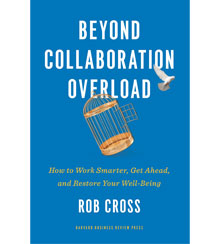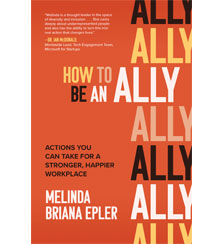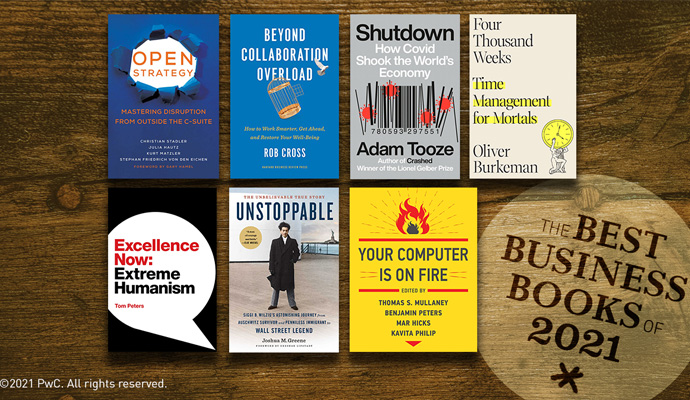Best Business Books 2021: Taming collaborative dysfunction
In the year’s best management book, Rob Cross identifies the causes of collaboration overload and offers tips and techniques for curing it.
Beyond Collaboration Overload: How to Work Smarter, Get Ahead, and Restore Your Well-Being
by Rob Cross (Harvard Business Review Press, 2021)
In the 1920s, Mary Parker Follett put forth the heretical idea that managers should pursue power with—not power over—employees. “It is possible to develop the conception of power-with, a jointly developed power, a co-active, not a coercive power,” argued Follett, whom Peter Drucker dubbed “the prophet of management.”
A century later, Follett’s vision is a reality. “Today, practically everything you do at work is a collaboration,” writes Rob Cross, the Edward A. Madden Professor of Global Leadership at Babson College, in Beyond Collaboration Overload, this year’s best business book on the topic of management. “When you attend your morning meeting, when you confer with a direct report, when you help the new person figure out the right expert to speak with about a project, when you page through your emails, when you pause to chat with a colleague, when you move from one webinar to the next while simultaneously addressing instant messages that seem to have urgent time frames—again and again, you’re collaborating.”
If that description seems to be taking on a manic tinge, welcome to the manager’s world. “The collaborative intensity of work has exploded over the past few decades,” writes Cross. Drawing on a series of studies conducted under the aegis of Connected Commons, a consortium of more than 100 large employers, where Cross serves as chief research scientist, he finds that 85% or more of employee time is devoted to collaborative activities. And yet companies have “no idea what impact this time has on corporate performance, individual productivity, or—perhaps most disturbing—employee well-being.”
But Cross has an idea of the impact. Organizational network analysis, performance metrics, and extended structured interviews reveal that many managers collaborate too much—becoming obstacles to organizational performance and their own well-being in the process.
Take Scott, a manager of 5,000 people working in three business units of a large company. In just one of those units, which employed 1,800 people, a staggering 118 people on an average day were going to Scott with requests. Worse, more than 65% of them—78 people—said they couldn’t hit their business goals without more of his time. “This is another obscene number,” writes Cross. “When we see that figure edge up past 25% of a leader’s immediate network, we know we’ve got trouble. Although the leader doesn’t feel it while racing from meeting to meeting, he or she is slowing things down significantly.” The results are burnout, attrition, and lower engagement scores because people can’t get their work done. Indeed, Cross learned that Scott, whom many people in the company considered the leading candidate to succeed the CEO, was about to get fired.
If you’re lucky, your level of collaboration overload is nowhere near Scott’s level. But if you are feeling hard-pressed to keep up with the collaborative demands on your time, and those demands are taking a toll on your performance and well-being, Cross offers succor: he says he can show you (or someone with whom you work or live) how to “reclaim 18 to 24% of your collaborative time”—about one day per week.
Cross says he can show you how to ‘reclaim 18 to 24% of your collaborative time’—about one day per week.
The detailed process that recaptures this time is informed by the research Cross and colleagues conducted into the behaviors and practices of managers who suffer from collaboration dysfunction, as well as those who have mastered the flip side of the coin, or what Cross calls “essential collaboration.” The process follows an infinite loop and makes up the core content of Beyond Collaboration Overload.
The right side of the loop is designed to slay collaborative dysfunction and give you back the time it consumes. According to Cross, it does this by describing the beliefs, structures, and practices that cause collaboration overload, providing exercises to help identify the ones bedeviling you, and suggesting practical remedies.
“A decade of research shows that we create roughly 50% of the collaboration overload problems in the form of the beliefs we hold,” explains Cross. “By ‘beliefs,’ I mean deeply held, and often unexamined, desires, needs, feelings, expectations, and fears centered around how we assume we need to show up for others.” These beliefs are manifested as two kinds of triggers: identity and reputational goads, such as the desire to help others; and anxiety and need-for-control goads, such as fear of missing out.
The book includes tips for combating each trigger. If you are driven by the need to help, for instance, become aware of why people are coming to you. If it’s because they hope you’ll do their work for them, learn to say no—and teach them how to help themselves instead.
The left side of the infinite loop is designed to put your newly liberated time to good use. “I’ve seen plenty of people reduce their overload only to take on more meetings, more emails, and more frenetic activity that, despite their best intentions, derails them, either sending them back to where they were or trading their old set of problems for new ones that undermine their careers and lives,” warns Cross. Instead, he wants you to reframe your work as a set of networks, become an energizing force within those networks, and invest time in creating a more balanced and fulfilling life for yourself.
If your work is essentially collaborative in nature, it stands to reason that you should be thinking about it in terms of networks. Cross finds that successful managers intuitively understand that form follows function; in other words, they let their work, particularly its time lines—whether short, medium, or long—determine their approach to network-building.
“Most of us have at least one and usually three or four core, medium-horizon projects or strategic objectives that are critical to our future success,” he writes. “These medium-horizon work streams dictate what kinds of connections are critical for effective and efficient delivery of results.” In this case, successful networkers cultivate connections that generate serendipitous ideas, envision projects as sets of activities rather than linear tasks, and tap formal and informal influencers (including those who are naysayers).
Beyond Collaboration Overload earns its spot among this year’s best business books for several reasons. It disabuses us of the notion that collaboration per se is a good thing. It defines dysfunctional collaboration and identifies its many causes. It provides a host of research-derived tools and techniques for managing collaboration in ways that benefit people and the organizations they work within. And, of course, there’s the welcome prospect of getting one day per week of your life back.
Honorable mentions:
How to Be an Ally: Actions You Can Take for a Stronger, Happier Workplace
by by Melinda Briana Epler (McGraw-Hill, 2021)
By all accounts, decades of large-scale diversity, equity, and inclusion (DEI) initiatives have failed to make a significant dent in workplace biases. In How to Be an Ally, Melinda Briana Epler, CEO of Change Catalyst, a DEI consultancy, takes a different tack—she brings the struggle down to the individual level. Read it to learn the everyday, one-on-one actions that you can take to achieve the kind of workplace that organization-wide DEI programs promise, but rarely achieve.
The Conscience Code: Lead with Your Values, Advance Your Career
by G. Richard Shell (HarperCollins Leadership, 2021)
We all aspire to live up to our values, but inevitably that aspiration gets challenged in the real world of business. In The Conscience Code, G. Richard Shell, the chair of the Wharton School’s Legal Studies and Business Ethics Department, offers ten rules for meeting those challenges. They add up to a street-smart prescription for doing the right thing.
Author profile:
- Theodore Kinni is a contributing editor of strategy+business. He blogs at Reading, Writing re: Management and is @TedKinni on Twitter.








